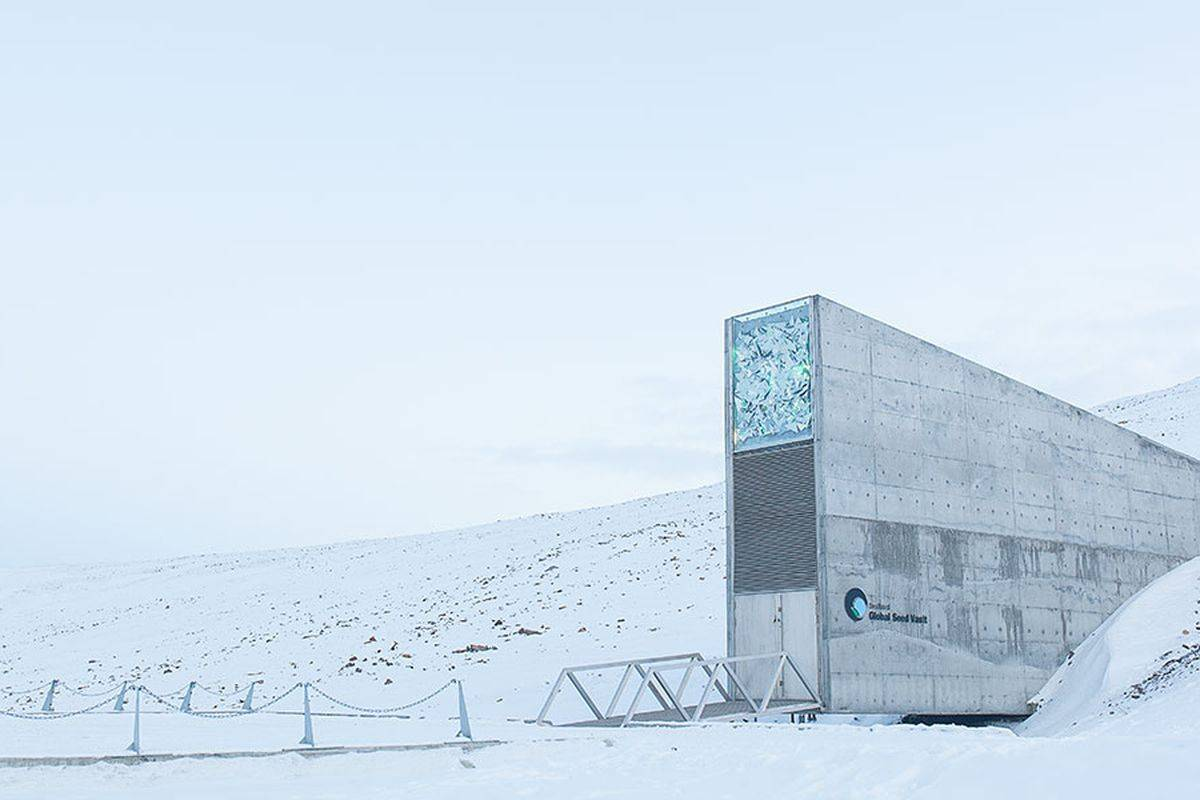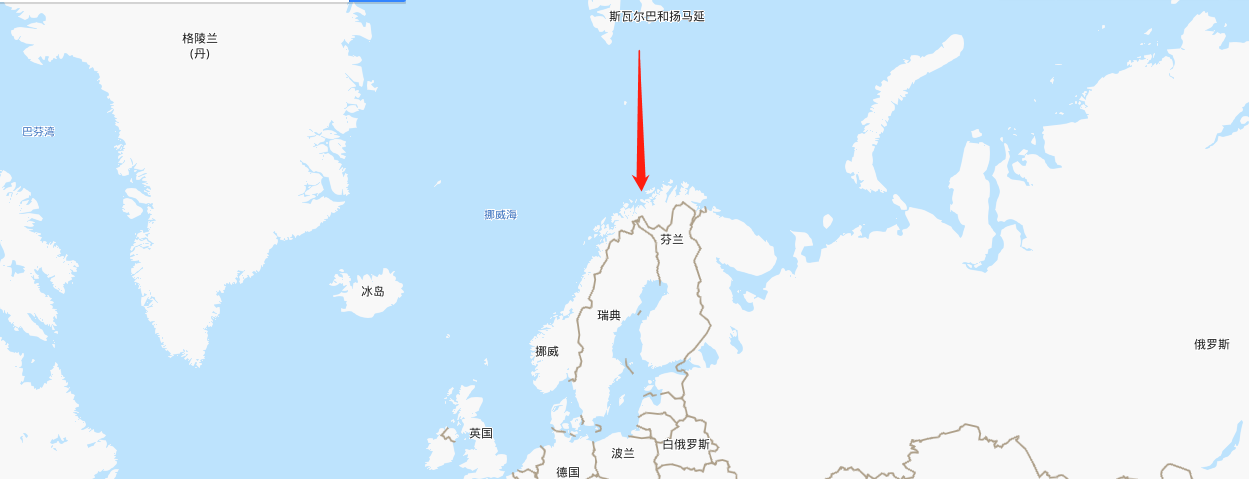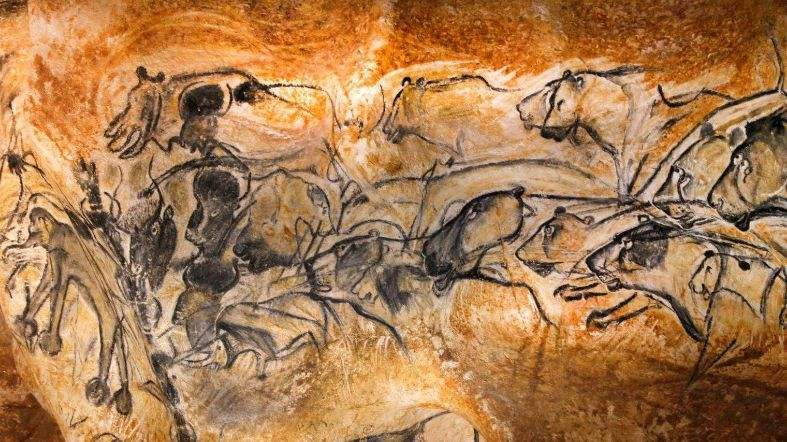For a story after a thousand years-Github bitcoin source code freezes Norway
"Non-tampering" is one of the characteristics of blockchain certificate information, but in extreme cases, this feature will be subverted.
Imagine that on a trivial day without warning, people from all corners of the world acted according to their established lifestyles. Suddenly, a mysterious force took humans away from the blue planet at this moment. A hundred years later, when these human beings captured by the mysterious forces returned to Earth again intact, what astounding changes will they encounter?
Needless to say, cars are turned into scrap iron, birds and beasts in cities, and large hydropower plants are on the verge of collapse. The most shocking thing for human beings is that the data created in the industrial era in the past 200 years-library collections, hard disk data, account information, etc. have all been lost, and human civilization has regressed for 1,000 years. The data stored in the blockchain cannot be spared after the failure of electronic devices and networks.
Looking back, people will find that those rock paintings carved on the Chauvet Cave in France tens of thousands of years ago still shine.
- Max Kaiser: Gold is the “toilet paper” of the rich and Bitcoin is the “toilet paper” of the poor
- Bitcoin broke through $ 7,200 in the early morning, and the surge in US unemployment applications made Bitcoin a safe-haven asset?
- Introducing 7 million users, Revolut, a digital bank valued at US $ 5.5 billion, announced that it will provide users with bitcoin trading services in advance
Yes, you read that right, the so-called tamper-proof nature of the blockchain is, in a sense, less than a thousandth of the reliability of rock paintings. This is why Github chose to save a large amount of source code in the form of a film in a Norwegian glacier mine instead of printing it on a book or burning it to a disc. This also includes bitcoin and dogecoin source code.

1. GitHub Bitcoin source code storage cave, for the story after a thousand years
GitHub will implement its Arctic Code Vault plan, the Millennium Code Preservation Plan, in April this year.
At that time, Github will store a large amount of open source code, including the underlying infrastructure code of Bitcoin, in underground coal mines in the icebergs of Norway. These codes will be copied onto the film reel and stored in a steel container for 1000 years to ensure that the history is preserved.
Vladimir Vanderland, the chief maintainer of Bitcoin, believes that electronic records may be lost in the future, and storing open source code on hardware can avoid loopholes in the history of cryptocurrencies. A GitHub spokesperson said that the team is currently preparing these data and plans to officially enter the mountain in late April this year.

Film recording Github source code
What is the carrier of such information? film.
It is understood that the film used by GitHub is manufactured by the Norwegian company Piql AS, which is a film coated with iron oxide powder. It is said that this film can be stored for 750 years under normal conditions, if it is cold, dry and low oxygen. The cave can be preserved for 2000.
Starting February 2, 2020, GitHub began to generate snapshots for all public repositories, encoded in the form of QR codes (two-dimensional codes) and stored on a roll of 3500 feet (1066.8 meters) long film, and then stored in Norway In an abandoned mine in Svalbard.
Previously, Nat Friedman, the CEO of GitHub, has come to the archive where the code is stored. According to Nat Friedman, GitHub will store 200 film reels here, each disk stores 120 GB of open source software code, the first disk The tablet stores Linux and Android operating systems and records more than 6,000 important open source applications. This includes the source code of Bitcoin and Dogecoin.
Svalbard is located between the Norwegian mainland and the North Pole, and is called "the northernmost city in the world". The cold environment is conducive to extending the storage life of the film. And according to the "Svalbard Treaty", this area is a permanent non-military area, which means that no data will be damaged or lost due to war and other reasons.

The story of Github's "Millennium Code Project" is similar to Noah's Ark in the Bible.
GitHub believes that the open source code is the "hidden cornerstone" of modern civilization, and the Arctic Code Vault plan is for future generations to use the open source code to rebuild civilization faster even if human civilization is almost destroyed by natural disasters or wars.
In the story of "Noah's Ark", God revealed Noah's "days of flooding", so Noah took a big boat with his family and moved all the applications to this big boat, Noah's The behavior was met with ridicule by many neighbors, who believed that Noah was unfounded, but they didn't know that they were already in trouble.
From a belief point of view, Github's move has a sense of tragic "preserving human fire".
In fact, in the Svalbard Islands, there is also a Svalbard Global Seed Bank called the "Global Agriculture Noah's Ark", which stores 860,000 seed backups of 4,000 human crops to prevent human In the face of large-scale disasters, some food genes will be lost forever.
Just as people laughed at Noah, people also questioned Github's approach.
Van der Laan pointed out that from a software engineer's point of view, hundreds of years from now, the code may not make much sense to the coders. Vanderland hinted that after 1000 years, people may not even understand the meaning behind these codes-just like only a few experts can read Oracle.
In this regard, GitHub has established an advisory group consisting of anthropologists, archaeologists, historians, linguists, and experts in archival science and futurism, and strives to make the archiving guide easy to understand. The complete set of archive guides QR decoding, technical guides for file formats, character encoding and other important metadata can help humans to quickly convert raw data into source code after many years.
As GitHub said, open source code is the common property of mankind all over the world, and this code archive plan is of great value to the continuation of human civilization.
In the context of immature storage media such as "glass discs" and DNA storage, can the use of optical discs, hard drives, books, and blockchain technology generally replace film?
2. Why not CD-ROM, hard disk, books, blockchain technology?
So why can't books, CDs, cloud storage, or even tamper-proof blockchain technology complete this project? the answer is negative.
For blockchain, the first is that the technology is not mature enough to carry a large amount of information storage, and the second is that after extreme conditions occur, network interruption and hardware damage will still cause information loss. The non-tamperable nature of blockchain technology is also a product of the normal operation of society.
Most importantly, blockchain technology is essentially an accounting tool, not an information storage tool, and is not suitable for recording large amounts of information.
As far as books are concerned, the British documentary "The World After Human Disappearance" shows in detail how the library was "trapped" by microorganisms when it lost its maintenance.
The documentary introduces that as a treasure trove of human knowledge, the library provides good storage conditions for the collection of books-the air conditioner guarantees the temperature and humidity of the library ’s books. However, once outside intervention, the temperature will start to increase, and the humidity will increase. Fungal spores that are not visible to the naked eye begin to accelerate growth. Under the combined effect of high temperature, water vapor and fungal spores, a paper version of the book can be stored for up to 100 years.
The reason why some books and documents survived. For example, the "Dead Sea Scroll" was kept in a cave in the desert for 2000 years. It is precisely because the cave is low and the desert is dry that these books have such a long life, but This is just a rare exception.
Nowadays, the digital media with the most usage and the most abundant information is not immune. Under ideal conditions, optical discs can store information for only a few decades to 100 years, and then these media for storing digital information will be useless and information will become unreadable.
For storing information on optical discs, it does not take hundreds of years. The source code archive is also very important for developers today. Some time ago, Max Schaefer, the original team member of Blizzard's game "Diablo 2", said that because the game's source code and all backups are lost, it is almost impossible to remake a "Diablo 2", they can only start from scratch Make.
On the contrary, the most backward rock paintings, turtle shells, etc. used by the original ancestors preserved information from thousands of years ago.
Take the pattern on the rock wall of ancient Egyptian architecture as an example, it opened a window for us to understand the history of Egypt. If the Egyptian ancestors mastered the technology of cloud storage or hard disk storage, the Egyptian civilization may have been wiped clean.
Let's take the French Chauve Cave as an example. The cave is located in the Ardèche province of Rhône-Alpes, France. It is famous for its rich prehistoric paintings on the walls, and is considered to be the most outstanding and the most outstanding in the world. Historic significance of prehistoric painting sites.

Paintings of the French Chauvet Cave, created 30,000 years ago
The cave is located on a limestone cliff near the city of Vallon Pontdalk in the Ardèche province. The cave was buried by gravel about 23 thousand years ago until it was discovered by three French explorers in 1994, causing academic and archaeological circles. The great shock was regarded as the first human culture in Europe. The cave name Xiao Wei is the surname from one of the three discoverers.
The Xiaowei cave has an area of 8,000 square meters and the cave is about 500 meters long. There are more than 450 animal murals on the rock wall of the cave. According to research, the Xiaowei cave was used by humans in the late Paleolithic period. Most of the rock paintings can be traced back to 30000 to 32000 years ago.
This shows that it is not an easy task to store a large amount of information for a long time.
In short, paper, optical disks, DVDs, hard disks, magnetic tapes, any kind of storage media invented by human beings in modern times, cannot guarantee the preservation of information for more than 100 years. After hundreds of years, Github ’s open source code stored in Norwegian mines may also become a world cultural heritage as important as the famous paintings of Notre Dame de Paris and Mona Lisa.
We will continue to update Blocking; if you have any questions or suggestions, please contact us!
Was this article helpful?
93 out of 132 found this helpful
Related articles
- Institutional investors continue to lurking, it will take time for bitcoin futures trading volume to recover
- Application of a Class of Trading Ideas in the Design of Quantitative Strategy for Bitcoin Futures
- Unlimited printing of the Federal Reserve will increase public trust in Bitcoin
- One article revealed the mystery of the North Korean hacker team: the world is fighting the epidemic, but they are stealing Bitcoin?
- The US Federal Reserve “unlimited water”, so “Bitcoin”
- What else can Bitcoin bring us if we can't hedge?
- Story | From the eyes of others, I know Bitcoin






